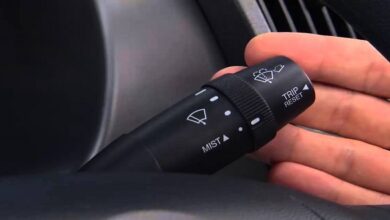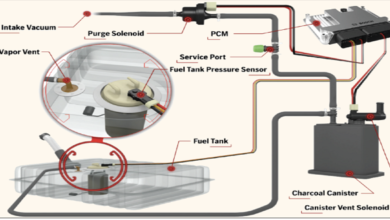Auxiliaries Windscreen washers and wipers

Functional requirements
The requirements of the wiper system are simple. The windscreen must be clean enough to provide suitable visibility at all times. To do this, the wiper system must meet the following requirements.In order to meet the above criteria, components of good quality are required for both the wiper and washer system. The actual method used by the blades in cleaning the screen can vary, providing the legally prescribed area of the screen is cleaned.
Wiper blades
The wiper blades are made of a rubber compound and are held onto the screen by a spring in the wiper arm. The aerodynamic properties of the wiper blades have become increasingly important due to the design of the vehicle as different air currents flow on and around the screen area. The strip on top of the rubber element is often perforated to reduce air drag.
Wiper motors
Most, if not all, wiper motors now in use are permanent magnet motors. The drive is taken via a worm gear to increase torque and reduce speed. Three brushes may be used to allow two-speed operation.
The normal speed operates through two brushes placed in the usual positions opposite to each other. For a fast speed, the third brush is placed closer to the earth brush. This reduces the number of armature windings between them, which reduces resistance and hence increases current and therefore speed.
Windscreen washers
The windscreen washer system usually consists of a simple DC permanent magnet motor driving a centrifugal water pump. The water, preferably with a cleaning additive, is directed onto an appropriate part of the screen by two or more jets.
Washer and wiper circuits
The switches are shown in the off position and the motor is stopped and in its park position. Note that the two main brushes of the motor are connected together via the limit switch, delay unit contacts and the wiper switch. This causes regenerative braking because of the current generated by the motor due to its momentum after the power is switched off. Being connected to a very low resistance loads up the ‘generator’ and it stops instantly when the park limit switch closes.
A simple capacitor-resistor (CR) timer circuit often based around a 555 IC or similar integrated circuit is used to control intermittent wipes. The charge or discharge time of the capacitor causes a delay in the operation of a transistor, which in turn operates a relay with change-over contacts.
Shows the circuit of a programmed wiper system. The ECU contains two change-over relays to enable the motor to be reversed. Also contained in the ECU is a circuit to switch off the motor supply in the event of the blades stalling. To reset this the driver’s switch must be returned to the off position.
Electronic control of windscreen wipers
Further control of wipers other than just delay is possible with appropriate electronic control. Manufacturers have used programmed electronic control of the windscreen wipers for a number of years now.
Last word
One system consists of a two-speed motor with two limit switches, one for the park position and one that operates at the top limit of the sweep. A column switch is utilized that has positions for wash/wipe, fast speed, slow speed, flick wipe, and delay, and which has several settings.




